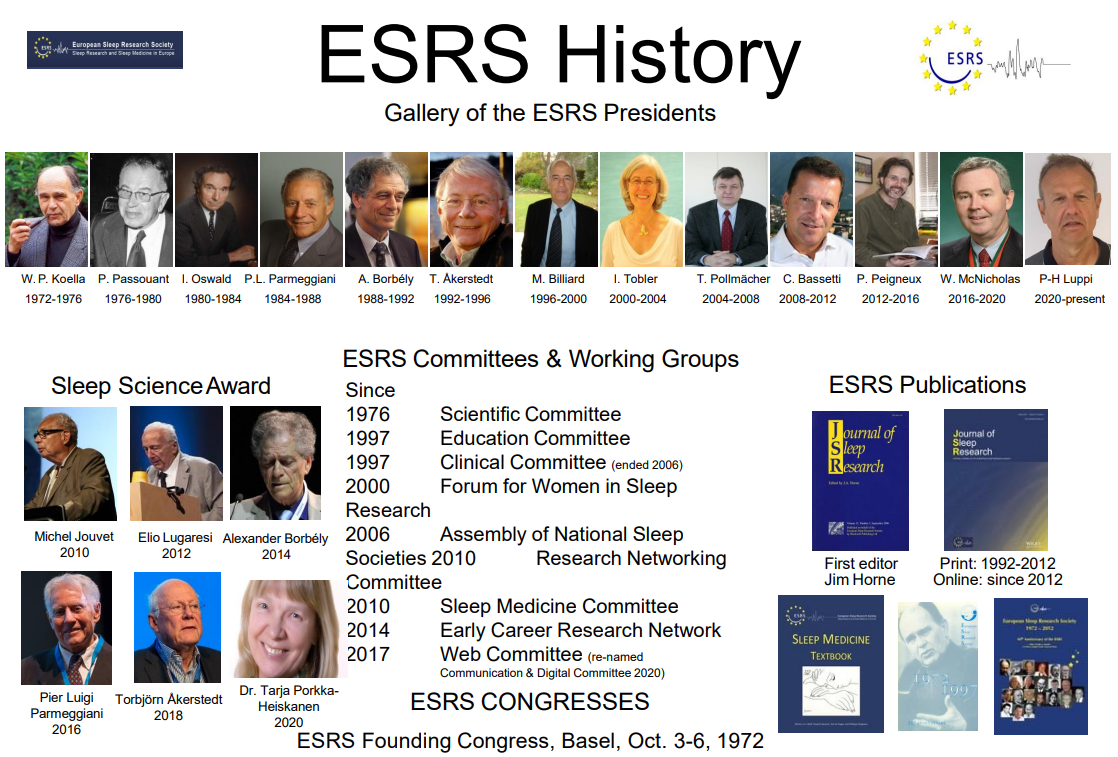Insomnia: The Treatment of Insomnia
21 January 2022
Even though 7 – 9 hours of sleep is recommended for healthy adults (Watson et al, 2015), many are not able to achieve this. “Approximately 6% of the adults in industrialized countries suffer from chronic insomnia as a disorder (for overview, see Ohayon, 2002), with a clear-cut preponderance of females compared with males (Zhang and Wing, 2006)” (Riemann et al, 2017).
The ESRS Sleep Medicine Textbook 2nd Edition features a significant chapter on insomnia including its classifications, pathophysiology, diagnosis, comorbidities and treatment possibilities. Below, we feature the chapter summaries for the guidelines for treatment and CBT-I as the first line treatment.
Current Guidelines for Treatment
“Since 2016, several national and international guidelines for the diagnosis and treatment of insomnia have been published. These include the guidelines by the American College of Physicians, the pharmacological treatment recommendations by the American Academy of Sleep Medicine, the diagnostic and therapeutic guidelines of the German Sleep Society, and of the European Sleep Research Society. Surprisingly, though coming from very different authorships, all guidelines by and large agree concerning the therapeutic recommendations. All of the guidelines, if they relate to psychological treatment, agree that cognitive behavioural treatment of insomnia should be the first-line treatment. This pays respect to the published evidence concerning the immediate and long-term effects of cognitive behavioural treatment of insomnia on daytime and night-time symptoms of insomnia. It is also stressed in this context that cognitive behavioural treatment of insomnia at present is not easily available around the world. Suggestions are made to improve this situation. Concerning the pharmacological treatment of insomnia there is agreement that short-term treatment within a time frame of 3-4 weeks is safe and adequate. Medications that can be given in this context encompass the benzodiazepine receptor agonists (newer and older ones), sedating antidepressants, and according to the different guidelines also other substances. No substance is fully recommended for long-term treatment. Given the fact that not every patient responds satisfactorily or even remits following cognitive behavioural treatment of insomnia, the open and urgent question remains: Which long-term treatment is adequate and safe for these patients?”
Summary by:
Dieter Riemann (2021). C. Insomnia 5.1. Treatment. Current guidelines. In Bassetti, C., McNicholas, W., Paunio, T., & Peigneux, P. (Eds.). Sleep Medicine Textbook (2nd ed., pp. 261-264). Regensburg: European Sleep Research Society.
CBT-I as First Line Treatment
“Insomnia is a highly prevalent and impairing condition, which negatively affects quality of life and health. Cognitive behavioural therapy (CBT) for insomnia is a family of therapeutic interventions that have been shown to effectively reduce insomnia symptoms in a wide range of patients, with treatment effects that last for a year or more. In this chapter, we introduce the reader to these therapeutic approaches and discuss their evidence bases, applications, and instructions. CBT for insomnia is well established as the first-line treatment for the disorder and yet standardization of provision and availability of CBT remain a challenge for its effective implementation across the diverse healthcare systems of Europe. Initiatives such as the European Academy of CBT-I seek to provide standardized and consistent training in the therapeutic approach and widen its appeal to specialists in other areas of healthcare.”
Summary by:
Dimitri Gavriloff (2021). C. Insomnia 5.2. Cognitive behavioural therapy for insomnia and other psychotherapeutic approaches. In Bassetti, C., McNicholas, W., Paunio, T., & Peigneux, P. (Eds.). Sleep Medicine Textbook (2nd ed., pp. 265-278). Regensburg: European Sleep Research Society.
The CBT-I Academy aims at disseminating CBT-I for clinicians and scientists especially in Europe, trying to establish teaching courses for clinicians throughout Europe in regular intervals. The following CBT-I Academy courses have been endorsed by the ESRS.
Secure your copy of the Sleep Medicine Textbook 2nd Edition today to go more in-depth on the topic of Insomnia, including pharmacological treatment and alternative interventions.
References
- Watson et al. (2015). Recommended amount of sleep for a healthy adult: a joint consensus statement of the American Academy of Sleep Medicine and Sleep Research Society. Sleep.
- Riemann et al. (2017). European guideline for the diagnosis and treatment of insomnia. J Sleep Res.
ESRS Announcements
Sleep Europe 2022 Abstract Submission
Abstract submission is now open for the 26th Congress of the ESRS. All accepted abstracts will be published in the Journal of Sleep Research as well as in the interactive programme online. This will allow your research findings to be seen by professionals around the globe.
Application Deadline: 21 April 2022, 23:59h CET
More details here.
2022 Sleep Medicine Examination Application
P.S. Apply to receive 1 of 6 sleep medicine examination grants for the 2022 sitting.
ESRS Funding Opportunities
Recent publications from ESRS members:
- Herkenrath et al. (2022). Severity stages of obesity-related breathing disorders – a cross-sectional cohort study. Sleep Med.
- Caporali et al. (2022). The role of mtDNA haplogroups on metabolic features in narcolepsy type 1. Mitochondrion.
- Mathis et al. (2022). The diagnostic value of sleep and vigilance tests in central disorders of hypersomnolence. Sleep.
- Strauss et al. (2022). Order matters: sleep spindles contribute to memory consolidation only when followed by rapid-eye-movement sleep. Sleep.
- Lenzo et al. (2022). The Relationship Between Resilience and Sleep Quality During the Second Wave of the COVID-19 Pandemic: A Longitudinal Study. Nat Sci Sleep.
- Celik, Balcan & Peker (2022). CPAP Intervention as an Add-On Treatment to Lipid-Lowering Medication in Coronary Artery Disease Patients with Obstructive Sleep Apnea in the RICCADSA Trial. J Clin Med.
- Van de Perck et al. (2022). Mandibular advancement device therapy in patients with epiglottic collapse. Sleep Breath.
- Lyne et al. (2022). Sleep problems in rheumatoid arthritis over 12 years from diagnosis: results from the Swedish EIRA study. RMD Open.
- Chenini et al. (2022). Depressive Symptoms and Suicidal Thoughts in Restless Legs Syndrome. Mov Disord.
- Leu-Semenescu et al. (2022). Comorbid parasomnias in narcolepsy and idiopathic hypersomnia: more REM than NREM parasomnias. J Clin Sleep Med.
- Cesari et al. (2022). Automatic analysis of muscular activity in the flexor digitorum superficialis muscles: A fast screening method for rapid eye movement sleep without atonia. Sleep.
- Zhang et al. (2022). Risk factors for phenoconversion in REM sleep behavior disorder. Ann Neurol.
Just published an article? Want your research to be featured? Saw something interesting? Contact us at esrs@esrs.eu.




